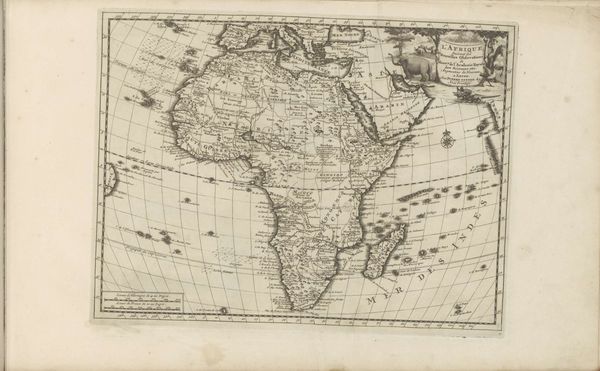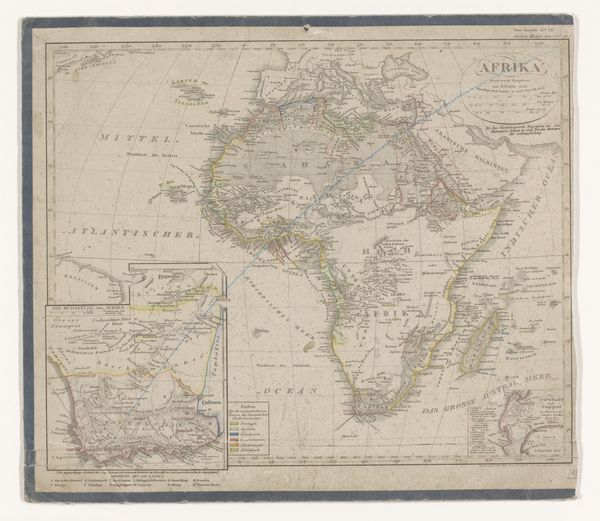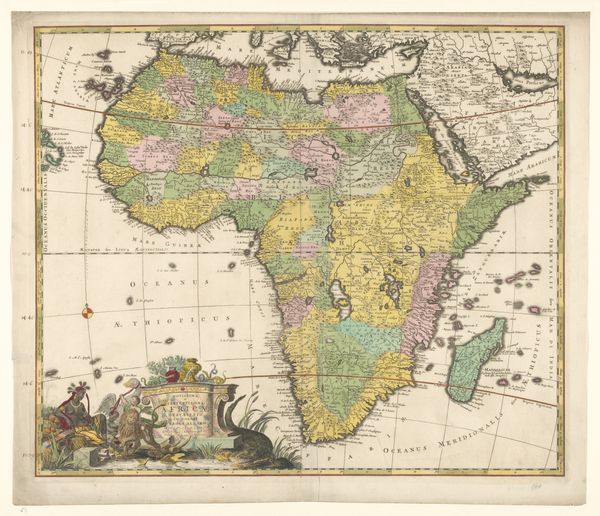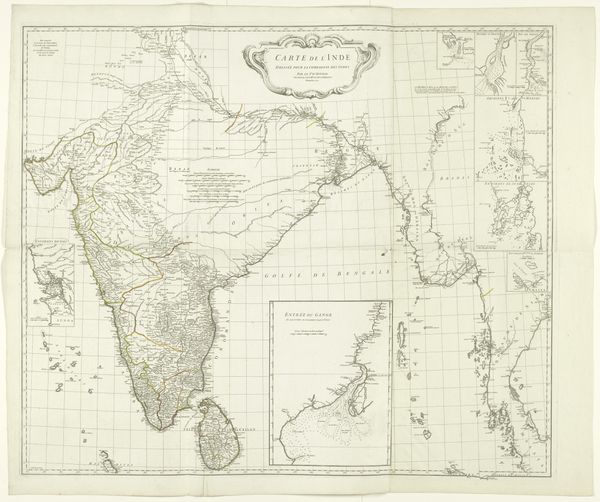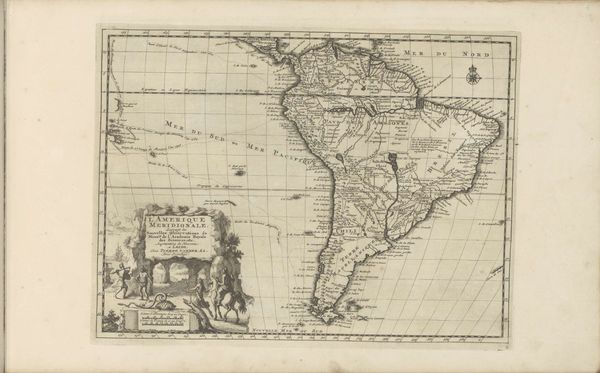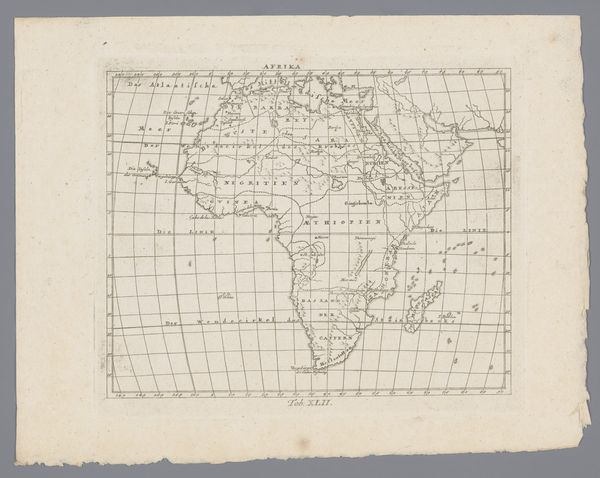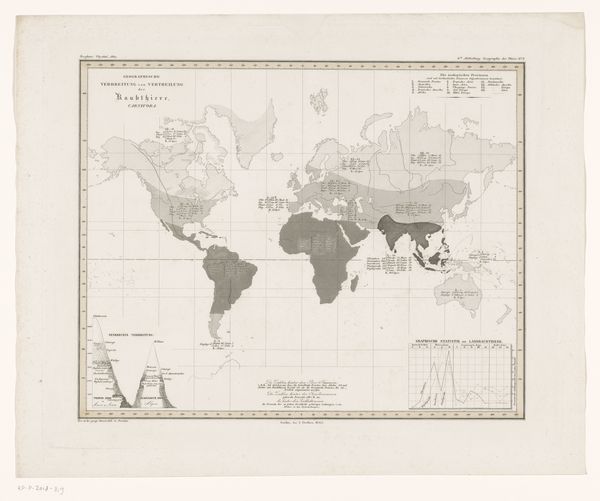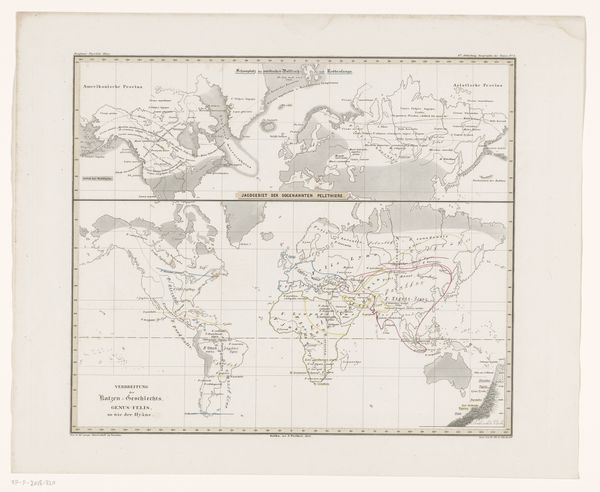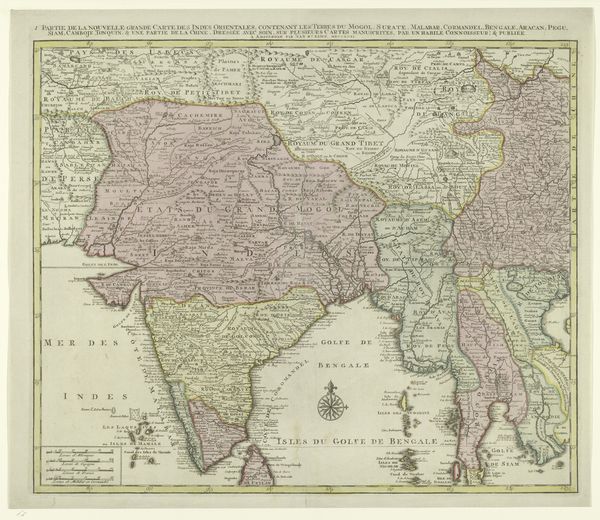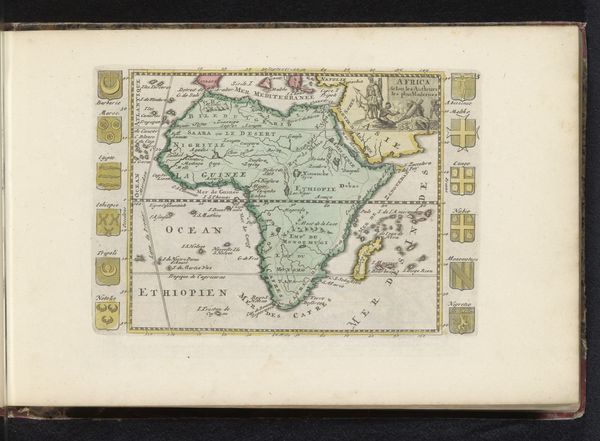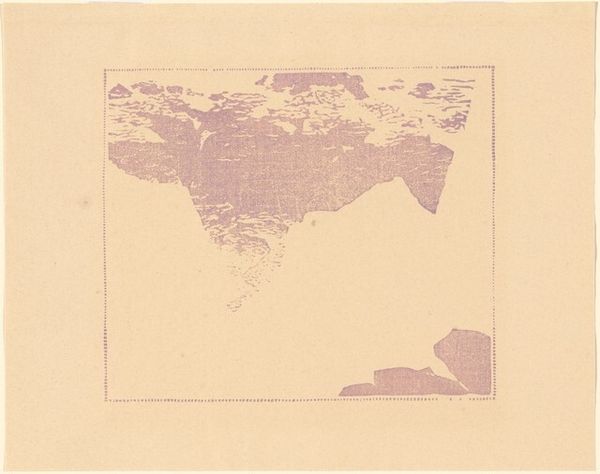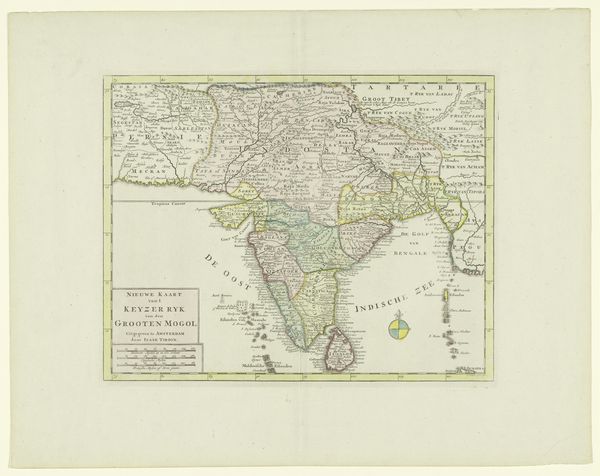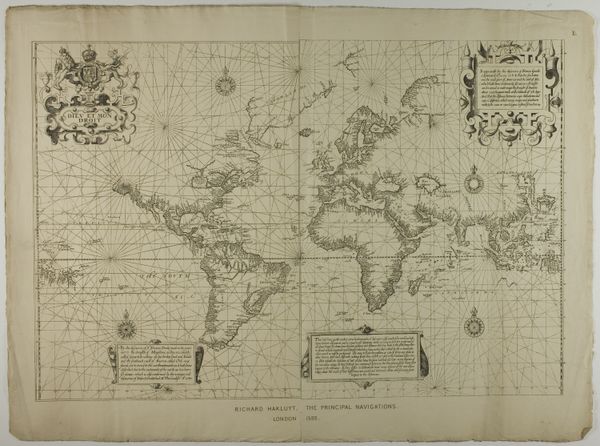
print, engraving
#
pen drawing
# print
#
pen illustration
#
pen sketch
#
old engraving style
#
11_renaissance
#
personal sketchbook
#
pen-ink sketch
#
pen and pencil
#
pen work
#
sketchbook drawing
#
sketchbook art
#
engraving
Dimensions: height 188 mm, width 253 mm
Copyright: Rijks Museum: Open Domain
Curator: Here we have "Kaart van Afrika" or "Map of Africa" by Jodocus Hondius, created sometime between 1573 and 1612. It’s an engraving, offering a view of the continent through the lens of Renaissance cartography. Editor: It's haunting, isn't it? All those intricate lines, attempting to define something so vast and unknown at the time. I feel a real sense of both wonder and melancholy looking at it. Curator: Definitely. Hondius wasn't just making a geographical document, he was participating in a whole European project of visualizing and, arguably, possessing the world. Editor: You can almost see the gaps in knowledge – those empty spaces where imagination filled the void. Makes you think about the power dynamics at play, right? Who gets to decide what goes on the map and how it's represented? Curator: Absolutely, and think about how maps like these played a crucial role in shaping European perceptions of Africa. They weren't just passive depictions; they were tools used to justify colonialism and trade. The visual rhetoric presented as objective geography had very material impacts. Editor: And yet, despite all that, I find the artistry quite compelling. There’s an elegance to the script and the imagined coastlines. It’s a reminder that even within oppressive systems, beauty and skill can emerge. Though I confess, it also reminds me of that strange allure problematic things have sometimes. Curator: It's a difficult but crucial balance to strike. Looking at historical objects necessitates acknowledging their role in harmful narratives while appreciating them as testaments to past techniques. Editor: I'll keep wrestling with my response. Maybe that tension is part of its continued value, forcing us to confront uncomfortable truths about the past and ourselves. Curator: Precisely. And by continually challenging these maps' claims of objectivity, we reclaim space for a more nuanced understanding of both the past and the present.
Comments
No comments
Be the first to comment and join the conversation on the ultimate creative platform.
